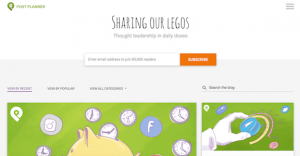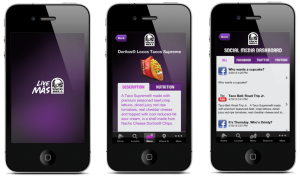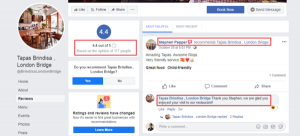— July 11, 2019
Every entrepreneur experiences four stages of business ownership: founder, farmer, tinker, and thief.
As a founder in the early stages of business ownership, you will need to innovate your thinking, your processes, and your systems. It’ll be on you to come up with the unique solutions to your unique problems, to figure out how to do $ 20,000 worth of work on a $ 2,000 budget. Finding these answers can be tough, but it’s essential.
Establish Your Foundation
The first exercise I do with every entrepreneur is called “Perfect Day.” The exercise is a simple one, but I’ve found that it creates a lot of clarity for my clients. It’s a picture of what they want their business to be and, more specifically, how they want their life to look and feel. Your perfect day will serve as your compass on your entrepreneurial journey. So grab your pen, laptop—whatever you like to write with—and let’s get to it!
A year from now, when your business is perfect…
- What time will you wake up in the morning? Will you start work early or sleep late?
- Will you put your kids on the school bus, have a leisurely coffee, and then cruise to the office, knowing that your early clients were handled just as well as if you’d been there?
- Will you go to an office, or do you work from home—or will you go to the beach?
- What work will you do within your business? Will you deliver your service or lead others to deliver it?
- Will you spend your afternoon further developing the business? Will you take your wife out for lunch? Will you leave early? Will you come back again later?
Some of my clients LOVE to work in their business and prefer to stay hands-on in its daily affairs. Others would like to learn more about the business side and cut back on sewing dresses all day. Both are great. The point is, you have the choice.
Let’s keep going. When your business is perfect…
- How many vacations will you take each year? Where will you go?
- How much net revenue will it take to support this lifestyle?
- How much staff do you need, which roles do you need to fill, and how will you support them?
Write it all down with as much detail as you can. (Note: you get bonus points if you put this list somewhere you can see it. When you’re having a challenging day, reviewing your “perfect day” will put things in perspective.)
As you can see, the conversation has only just begun. But it’s important to start talking about the right things right away. It’s too easy to build up a ton of momentum and still be headed in the wrong direction.
Now let’s consider what you’re willing to sacrifice to reach your perfect day.
The Brass Ring
Some of the first carnival rides were carousels. You can probably picture them: colorful horses bobbing up and down to organ music, mirrors, and lights glittering in the sun.
On the first carousels, only the inner rows of horses moved. The outer rows were static. So when crowds swarmed the ride, everyone fought for the moving horses.
To entice riders onto the outer rows, enterprising buskers developed a challenge. They hung rings from a pole just beyond the reach of riders on the carousel. Only the passengers on the outer horses could reach the rings, and even then, they could reach the rings only if they stretched to their maximum limit.
Most of the rings were steel, but each carousel had one brass ring. If a rider managed to grab the brass ring, he would win free rides for the day. The brass ring was rare and even harder to reach than its steel counterparts. Many riders fell off, ruining their ride, in their attempt to grab the brass ring. But every carousel ride had a few daredevils willing to risk their turn for the promise of unlimited rides in the future.
Sounds like entrepreneurs to me.
Any brass ring, any rarified prize bestowing benefit to the owner, must necessarily come with risk. Most people are content to wait their turn, enjoy the mild thrill of a moving horse, and then surrender their seat. But a few of us line up with the sole intent of sitting on the edge, stretching ourselves to the max, and risking our ride for a bigger prize. We do so knowing that most rings aren’t brass. We know we could fall and that we probably won’t be able to afford a second ride. We take our shot without practice beforehand, without help, and with the full knowledge that the carnies don’t want us to win.
What makes the ring worth it? Is it the free rides, or is it the risk?
When you define your perfect day, consider the brass ring. How many rides are you willing to gamble before you stop reaching?
What are you willing to give up to get it?
Writing your perfect day will serve as the foundation for your goal-setting process. Defining what you’re willing to sacrifice to attain it will help shape your path to achieving it. But there’s one more step to consider: the lens through which you view success. What is your bedrock?
Turtles All the Way Down
In A Brief History of Time, Stephen Hawking told the story of a renowned scientist (possibly Bertrand Russell) who gave a public lecture on astronomy:
He described how the earth orbits around the sun and how the sun, in turn, orbits around the center of a vast collection of stars called our galaxy. At the end of the lecture, a little old lady at the back of the room got up and said: “What you have told us is rubbish. The world is really a flat plate supported on the back of a giant tortoise.” The scientist gave a superior smile before replying, “What is the tortoise standing on?” “You’re very clever, young man, very clever,” said the old lady. “But it’s turtles all the way down!”
Knowledge—in science, in myth, and in your business—requires a foundation of absolute truth.
If I ask your staff, “Why do you open at 9 a.m.?” are they likely to say, “Because that’s the time we’ve always opened”?
If so, what answer would they give if I ask, “Why have you always opened at that time?”
Would they say, “Well, that’s what time everyone opens on this street”?
And if I asked, “Why does everyone on this street open at nine a.m.?” What answer would I get then? It’s turtles all the way down.
But if your staff answered the first question with, “We polled our best clients, and they prefer to start visiting at 9 a.m.” or, “Traffic patterns on this block show that people arrive around 9:30 a.m.,” then I would know that your business had a solid foundation of data.
When I worked in a treadmill store years ago, a traveling sales rep subjected me to such questions.
“Why do you open Monday to Friday from nine until five, then open for a half-day on Saturday and stay closed all day on Sunday?”
My answer: “Because that’s when people come in.”
He asked, “What other times have you tried?”
I backpedaled: “Well, no one else in this mini-mall is open on Sunday. We’d be the only one.”
He continued, “Why do they all close on Sundays?”
Finally, exasperated, I answered, “Well, I’m not going to work seven days a week! I need my Saturday afternoons and Sundays off!”
His point was that most people don’t buy treadmills between nine in the morning and five in the evening because they’re at work. They buy treadmills between 5 p.m. and 9 p.m. and on the weekends because that’s when they’re free to shop. So why not run wide open for two weeks, track when people want to visit most, and then close for the rest of the time?
As he asked me those questions, I realized I had no bedrock. I didn’t have real reasons for doing things the way I did. It was turtles all the way down. My business was a house of cards, and each card was just a guess.
Here’s how we build foundations at Two-Brain Business, my mentoring practice:
- We start with your values. What’s your personal, non-negotiable bedrock? What are you not willing to sacrifice to uphold them? For example, I believe in transparency and fairness, so I don’t offer discounts at my gym.
- Next, we build a playbook so that your staff will find it easy to do things the way you want them done. They don’t have to guess what the owner wants from them. The playbook becomes their bedrock.
- Finally, we examine the gold standards in your industry and ask, “What are the best doing? What’s a ten out of ten?” and work to improve all of it.
Just as you can’t add weight to a house of cards, you can’t grow a business without a strong foundation.
When a business owner books a consultation call with me, I spend the first ten minutes asking questions. I want to know their story. I want to see if I can help them. And I want to find their bedrock.
So I ask about their perfect day. I ask them to tell me the story of their business. I ask, “Who’s helping you with this?” But what I’m really trying to find is their foundation: the systems on which their business runs.
If your business has a good foundation, everything you build on top of it will be supported by data and solid reasoning, and that’s the best start any founder can aim to create.
This article was adapted from the book Founder, Farmer, Tinker, Thief: The Four Phases of the Entrepreneur’s Journey.
Business & Finance Articles on Business 2 Community
(42)





